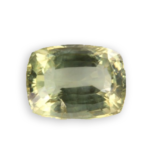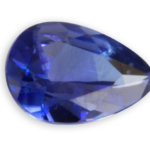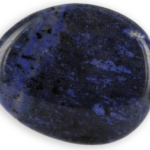
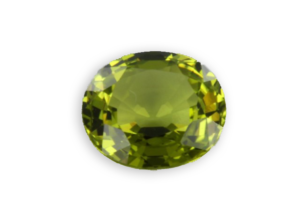
chrysoberyl
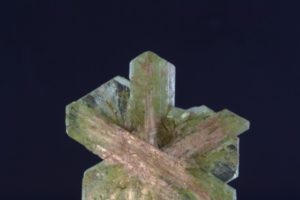
twinned in round chrysoberyl from Madagascar
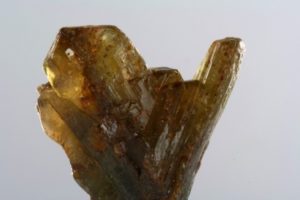
chrysoberyl crystals from Sri Lanka
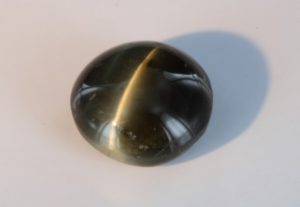
chatoyancy effect, cat’s eye like, in a chrysoberyl from Sri Lanka
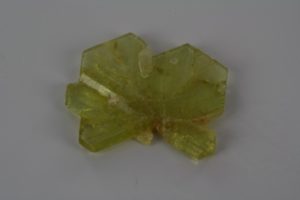
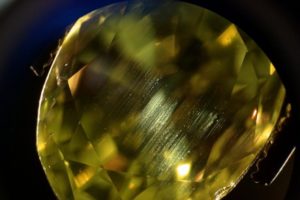
parallel growth tubes inclusions in yellow chrysoberyl
Detailed sheet
chrysoberyl
Known since antiquity as a “golden beryl”, its name derived from the Greek “khrusos” for gold.
Two popular varieties are appreciated gems: the golden yellow variety and the red / green which is called alexandrite.
Most chrysoberyls are golden – yellow to brown – green going through yellow – green.
The green-blue and red variety is called alexandrite (see alexandrite). A blue-green variety was discovered in Tanzania .
The variety called “cat’s eye”, was rarely named cymophane (Greek for “reflection of the ring”), they are microscopic tubelike cavities in the crystal producing a silvery white band of light that seems to move in a stone cut cabochon and resembling the pupil of a cat’s eye.
It was very sought in the nineteenth century, for one of 313 carats had been offered to Queen Victoria by the King of Kandy in Ceylon. The name “cat’s eye” without specifying the name of the gem is reserved only to chrysoberyl.

CHEMICAL CHARACTERISTICS
BeAl2O4
alluminium and beryllium oxide

PHYSICAL CHARACTERISTICS
Main color
yellow
Other colors
brown, red, green
all shades of yellow: from golden yellow to yellow-green and yellow-brown. Also green and red for the alexandrite
Color of streak
white
Luster
vitreous
Hardness
8.5 to 0.0
Density
3.70 to 3.80
Cleavage
indistinct
Fracture
conchoidal

OPTICAL PROPERTIES
Transparency
translucent, transparent
The cat’s eye ( cymophane ) is a type opaque to translucent with the phenomenon of chatoyancy.
Refractive index
1.746 - 1.763
Double refraction
0.007
weak, biaxial (+)
visible double refraction
No
Dispersion
0.015(0.011)
Pleochroism
very weak
Number of colors
3
red - yellow, yellow - green, green
Absorption spectrum
445
Fluorescence
none

CRYSTALS PROPERTIES
cyclic twins going round
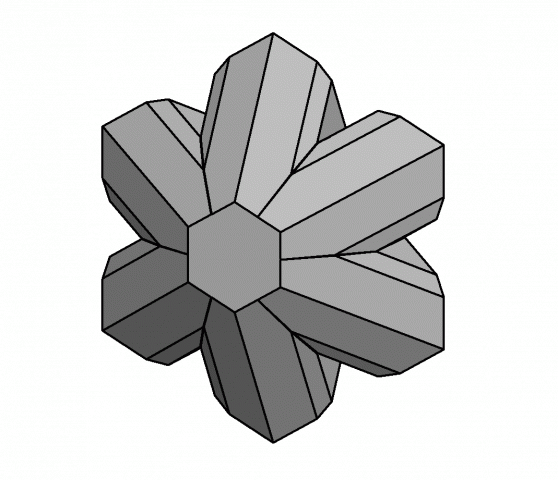

OTHER INFORMATIONS
Astrological sign
Aries, Capricorn, Scorpio
Month
june

APPROACHING GEMS
Exploited
sites
It is found in granitic pegmatites, micaceous schists in Burma, Brazil, Madagascar, Russia, Rhodesia, Sri Lanka.
Deposits of cat’s eye: we find them in Sri Lanka, Brazil, China, India, Zimbabwe.
use in jewelry
It is cut in degrees, brilliant-cut or Indian cut. This is a very appreciated gem often confused by miners with beryl or spinel in the alluvium. Its hardness and brilliance fully meet the criteria of a jewelry stone.
Known as the “jargon”, it was widely used in the eighteenth century throughout Southern Europe, many jewels contain many of these stones, cut very flat with a square or trapezoidal shape.
Cat’s eye is the 18th wedding anniversary stone.
The alexandrite is an alternate birthstone for june.
Daily care
and precautions
Very resistant gem, of a high hardness and low maintenance. Water wash with dish soap, rinse with water then with alcohol.
imitations and
treatments
The cat’s eye can be synthesized, it can be confused with shimmering quartz or prehnite, apatite or green albite. In the 1990s, some brown “cat’s eye” chrysoberyls, were obtained by irradiation and were radioactive, their sale is strictly forbidden.
Historical
healing properties
This gemstone would influence on the solar plexus chakra having a beneficial effect on the digestive system and kidneys. It would lead to philosophical thoughtfulness.
Cat’s eye: it would be a regulator of liver, gallbladder, pancreas, intestines. Supposedly it has the power to promote night vision. It would give energy, relaxation, audacity and therefore it should be helpful to athletes.
historical stones
and related legends
A green 45 carats chrysoberyl in the British Museum is called “Hope “(unrelated to the diamond of the same name).
Venez visitez
notre site web
voillot-joaillier.fr
Lorem ipsum dolor sit amet, consectetur adipiscing elit. Ut elit tellus, luctus nec ullamcorper mattis, pulvinar dapibus leo.Lorem ipsum dolor sit amet, consectetur adipiscing elit. Ut elit tellus, luctus nec ullamcorper mattis, pulvinar dapibus leo consectetur adipiscing elit. Ut elit tellus, luctus nec.


